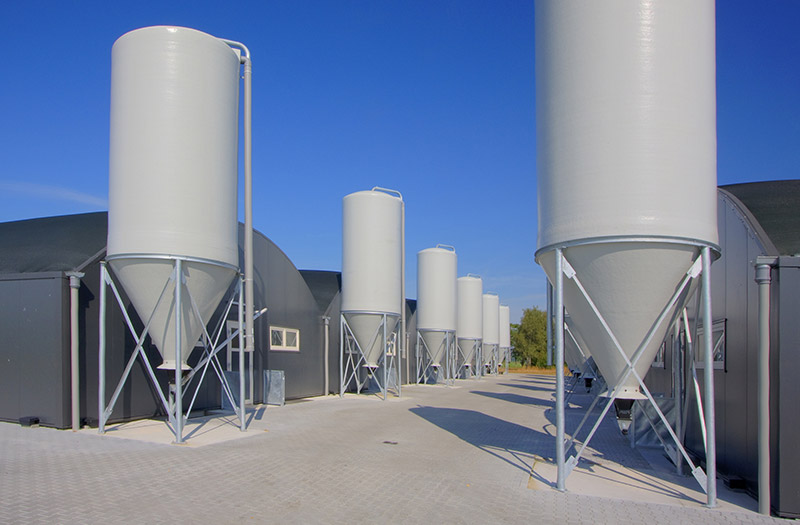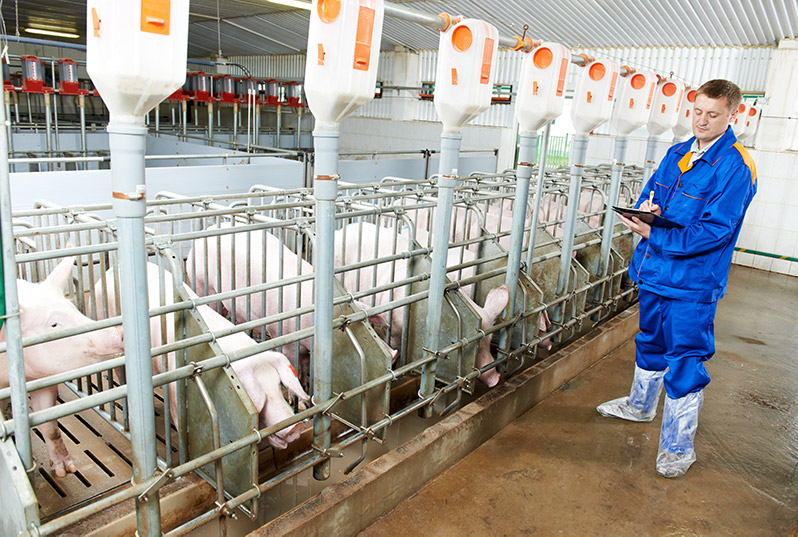Section 1 | Biosecurity
Industry
Page 03 /
An Introduction to the National Swine Farm-Level Biosecurity Standard
Biosecurity is defined as the set of practices and principles that protect a population of animals from the introduction and spread of infectious diseases. Preventing disease entry through improved biosecurity and management practices should reduce the need for antimicrobial treatments, the ultimate goal of these modules.

Overview of the National Swine Farm-Level Biosecurity Standard
In 2010, an expert veterinary committee, formed by the Canadian Swine Health Board, published the National Swine Farm-Level Biosecurity Standard. This Standard was meant to serve as a tool for swine producers and industry workers to tailor biosecurity measures to individual farm needs. The ultimate goal was to improve swine health and productivity, ultimately leading to the economic sustainability of the industry.
To view the complete document, click here:
National Swine Farm-Level Biosecurity Standard
This section will summarize some key considerations outlined in the document.

Definitions
The Standard outlines the three main strategic objectives of biosecurity:
- Bio-exclusion (external biosecurity): policies that keep disease off of the farm. The goal is NOT introducing new infectious disease into your uninfected premise
- For instance, porcine reproductive and respiratory syndrome (PRRS)-free herds focus biosecurity efforts on bio-exclusion practices
- Bio-management: These practices are focused on preventing the spread of infectious disease(s) once they are present on your farm
- For instance, a farm experiencing an outbreak of diarrhea in one farrowing room focuses on bio-management practices to prevent the spread to other uninfected rooms
- Bio-containment: these practices are focused on preventing the escape and spread of infectious disease from infected farms (essentially a quarantine). This prevents the spread to other uninfected farms
- For instance, movement restrictions in place following the foot-and-mouth outbreak in the United Kingdom focused on containing the disease to a geographic region

Goal and Scope of the Standard
Overall, the Standard is designed to assist swine farmers in the control of diseases important to both swine and/or human health. By focusing on high-level, important areas of biosecurity, it facilitates tailoring of best management practices (BMPs) on a variety of operation types and sizes across the entirety of the production chain.
Maintaining biosecurity on your farm will reduce disease entry and lower antimicrobial use
General Principles in the Standard
The principles outlined in the standard are focused on reducing the introduction and spread of infectious diseases on the farm.
- Segregation refers to using physical barriers to limit risk that infectious pathogens (viruses, bacteria, fungi, and/or parasites that cause disease) pass from infected animals or materials to an uninfected site or group of animals
- Sanitation are those cleaning and washing practices that reduce organic material (such as manure and bedding), disinfect (kill infectious pathogens), and dry surfaces. The goal is to reduce and/or inactivate any pathogens that may be present on any surface that an uninfected animal may contact. It’s all about breaking the cycle of disease transmission
- Flow management focuses on taking actions to prevent infection of uninfected animals, by organizing the flow of animals, people, and materials on a farm. This is where the all-in/all-out placement of pigs tends to come in
- Records support the creation and application of BMPs and ensure that everyone is trained and remains compliant on all protocols developed. They allow anyone coming on the farm to verify that farm practices are in place, assess the disease rates in the herd, and evaluate the level of compliance with protocols

The Standard also describes the concept of “compartmentalization”. Compartmentalization is an animal health concept that recognizes that different sites can be “linked” if they have a common health status (e.g. the same profile of infectious pathogens present) and biosecurity measures. This principle is used by multi-site production systems that require a common biosecurity plan for the system to function efficiently. In this respect, disease risk is not unit-specific, but rather viewed in the context of the entire flow of production.
